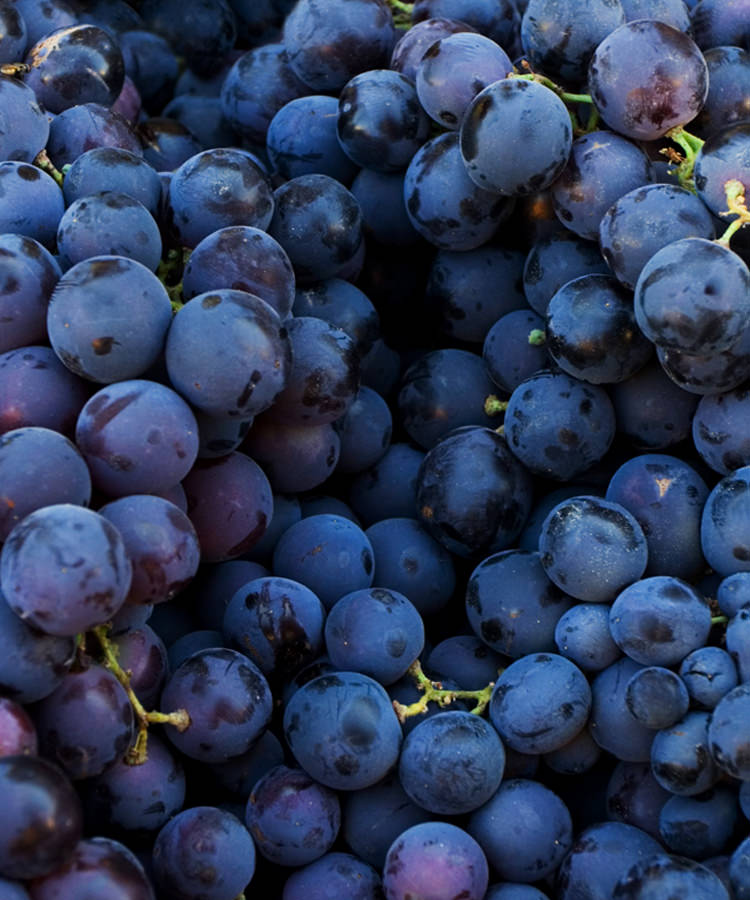The South African wine industry is one of those new regions you might be hearing about more and more. It’s ironic, because even though it’s considered New World, South Africa’s wine tradition is over 300 years old. The irony is not lost on young winemakers in the region, who are finding inspiration in the past. Cinsault, a grape that has risen and fallen in popularity over time, is now being embraced as the new darling varietal. With these wines coming stateside and leaving a big impression on the wine community, you should be paying attention to Cinsault.
Cinsault (or Cinsaut) originated in the south of France. Cultivated as “Hermitage” since 1850 in South Africa, it was discovered in the early 20th century to be the same as the Mediterranean grape, according to Marietta Louw, the head of the Plant Improvement Organisation, a research group owned by Bosman Family Vineyards. Cinsault used to be one of the most widely planted varieties. However, in the mid-20th century, the rising popularity of Bordeaux varieties changed Cinsault’s status, and vineyards were ripped up to make way for the French grape du jour.
But winemakers encountered a big issue with their new plantings: desirable Cabernet Sauvignon was rather expensive to grow and produce. So they turned to the oldie but goodie that they had just recently torn up: Cinsault. Until 1973, wines only needed to contain 25 percent of a certain grape to be labeled single varietal, so Cinsault could be blended into the Cabernet with no one the wiser. “It filled the gap, literally,” says Adam Mason, winemaker at Mulderbosch. Cinsault’s large berries produced a good amount of juice, which was blended, or even co-fermented, with the star grape to increase volume and generate a higher profit.
In an unexpected plot twist, many of these older Cabs are now showing beautifully due to the high Cinsault content, and lauded for their elegance and age-worthiness.
The up-and-coming winemaking generation wasn’t the only one to take notice; sommeliers and wine writers’ enthusiasm over these structured and refined older vintages also raised interest in this underdog grape. With groups like In Pursuit of Balance raising the collective consciousness around balanced wine styles, Cinsault is poised to move from the chorus into a starring role.
“I think the lighter-styled Cinsaults are becoming very popular in the South African market and there’s already a big market overseas for this style,” writes Tremayne Smith, winemaker at The Blacksmith, in an email. “I love the freshness and purity of fruit that it gives you in the wine… I love the fact that you can make a light and aromatic red from Cinsault but it still has great tannins and structure.”
“Winegrowers are looking for interesting avenues, looking for wines that give a great amount of freshness and accessibility,” says importer Pascal Schildt of Pascal/Schildt. “They say, ‘Hey, we’ll buy five tons of your Syrah, and we’ll buy five tons of your Grenache; oh, you’ve got some Cinsault as well? That’s really interesting.’ Winegrowers started experimenting with it in blends and [thought] ’Wow, that’s tasting real great on its own, let’s bottle it on its own.’”
“[T]he future is bright for Cinsault as a single varietal,” says Smith, “especially with the younger generation of winemakers in South Africa.”
Wines to Try
Barebones, The Blacksmith, Paarl, South Africa, 2015
The wine shows red berry fruits and some brambly character. It’s lighter bodied and fresh, with good acidity.
Seriously Cool Cinsault, Waterkloof, Stellenbosch 2015
Lots of red fruits and spice notes come through on the palate. Light in body and color, it’s called “Cool” because the winery recommends serving chilled.
Cinsualt, Silwervis, Swartland 2014
Fennel and clove spices jump out on the nose, while the palate has hints of orange peel and a long finish of raspberries.
Pofadder, Sadie Family Wines, Swartland, 2015
A more intense style, but still retains the red fruits (cherries, strawberries). It’s spicier, with some wild herb notes. More medium-bodied.
Thirst Cinsault, Radford Dale, 2016
Very light in color; cranberries, strawberries, and a bit of spice come through on the nose. This light-bodied wine in delectably juicy and refreshing.
